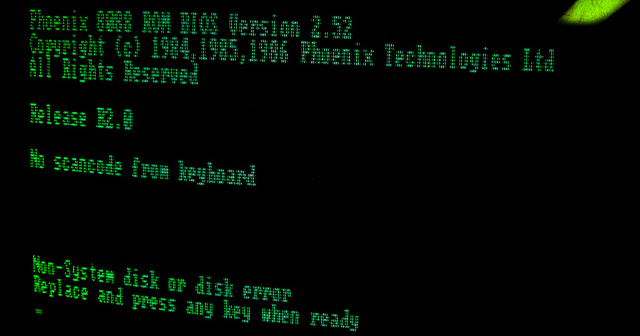In the early days of personal computing — think UNIX early — text was often white or green on a black screen. That didn’t last long, of course, but there’s a little-known reason that those shadowy screens weren’t ideal for users. And it has to do with your poor eyesight.
First of all, for those of us who weren’t around back then, a brief primer on how our LCD or plasma screens differ from those black-screened consoles of yore. These monitors used cathode ray tubes to shoot electrons at a fluorescent screen to produce pixels. Inside, these screens were coated with phosphor — a material that glows when struck with radiation (like the electrons), each creating a pixel of light. These early screens used a type of phosphor that emitted a greenish, yellowish glow — hence the early Matrix-style green-against-black monitors.
Later on, technology would advance to the point where each dot of light would contain a red, blue and green phosphor, giving us colour monitors. But considering that we started off computing on black backgrounds, what caused the switch over?
The most obvious cultural reason is that white backgrounds emulate the experience of reading on paper — not to mention the advancement of screen technology away from th green glow. But digging a bit deeper reveals another fascinating explanation of why white screens might be best from Tatham Oddie, CIO at Readify, who took to his personal blog to discuss the science of readability. In his post, he cites a study from 1980, when cathode ray tube monitors were still the norm, that found reading accuracy improved by 26 per cent when screens had white backgrounds instead of black.
The reason for that? Look no further than the basic structure of an eye with astigmatism, according to the Sensory Perception and Interaction Research Group, at University of British Columbia:
People with astigmatism (aproximately 50% of the population) find it harder to read white text on black than black text on white. Part of this has to do with light levels: with a bright display (white background) the iris closes a bit more, decreasing the effect of the “deformed” lens; with a dark display (black background) the iris opens to receive more light and the deformation of the lens creates a much fuzzier focus at the eye.
So white screens force the iris of the astigmatic eye (like yours, maybe!) to close, which lessens the effect of your deformed lens. Who knew our white-backgrounded screens are like a crutch for a commonplace eye defect?
This optical explanation is a pretty interesting biological basis for the shift, although of course there are plenty of reasons why white screens beat out black ones — and why plenty of people still prefer black backgrounds (or grey) to white. In fact, the debate over white-versus-black backgrounds is a perennial topic online, with many programmers arguing that dark or colour backgrounds are easier on the eyes given the reduced amount of light. That’s why so many applications (and even Yosemite!) are offering the ability to toggle between light and dark modes.
But in those early days, studies like these — paired with the colour screen technology heralded by Apple with the 1977 introduction of the Apple II — may have shifted the tide. [Tatham Oddie]
Picture: Lungstruck.
